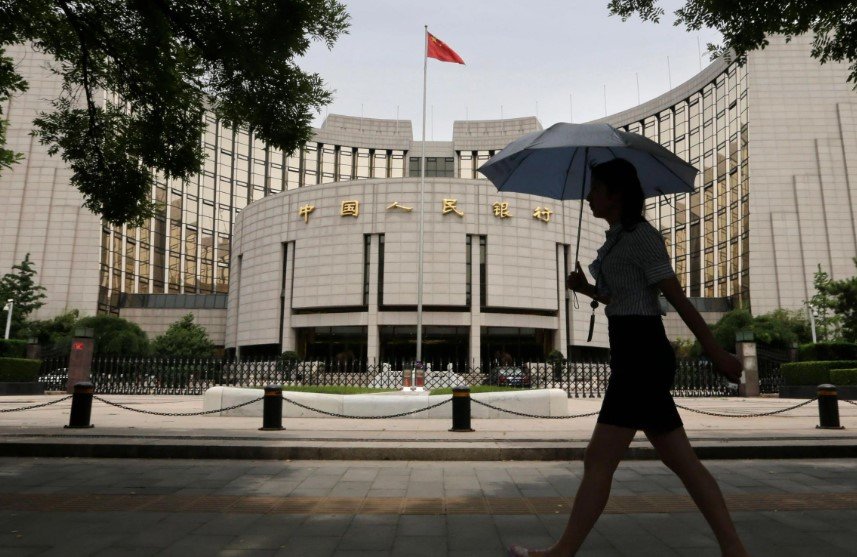Experts warn against “involution-style” competition as lenders chase flashy growth at the cost of long-term stability
China’s banking system is being pushed to slow down and wise up. A growing chorus of financial experts is urging banks — especially small and mid-sized ones — to drop their obsession with speed and scale, and instead build something that lasts.
The call comes amid rising concerns over what experts are calling “involution-style” competition. That’s a term you don’t hear every day in finance. But in this case, it refers to something very real: irrational price wars, distorted incentives, and short-term strategies that might be making banks look good on paper, while actually hollowing them out from within.
Cooking oil, shopping cards, and sketchy interest games
Over the past few years, China’s lenders have been pulling out some bizarre tricks to lure in customers. Some are giving away cooking oil and cash vouchers just to get depositors through the door. Others are playing games with how they calculate interest rates — all in the name of making monthly and quarterly targets.
If it sounds desperate, that’s because it is.
In some cities, small banks are offering personal loan rates under 3% — lower than their own cost of funding. Which, economically speaking, makes no sense.
One sentence break here.

What’s driving this race to the bottom?
According to Dong Ximiao, chief researcher at Merchants Union Consumer Finance and deputy director at the Shanghai Institution for Finance & Development, there are two main forces behind this trend.
First, China’s economic cycle is down. Consumer demand is weak. Competition is fierce. Banks are scrambling to hold on to market share — and they’re not always thinking long term.
Second, a lot of banks are still stuck chasing asset growth for the sake of it. Bigger balance sheet? Good. More loans? Great. But that’s where the trouble starts.
“They’re fixated on growing fast and growing big,” Dong said. “But that kind of growth is superficial. It doesn’t build resilience.”
The risks are stacking up
Experts warn that this kind of cutthroat competition does more than just shake up the rankings. It can actually threaten the entire financial system.
Here’s what that looks like in practice:
-
Banks undercut each other on rates, driving loan yields below sustainable levels
-
Risk controls loosen as institutions rush to push out more credit
-
Metrics get distorted — deposit inflows surge at month-end only to collapse days later
-
Services become indistinguishable, eroding customer trust
At the same time, back-office stress is rising. Bank staff are under pressure to hit aggressive growth KPIs, sometimes bending rules to do so. Some branches inflate deposit figures with short-term tricks, knowing the deposits will vanish once the clock resets.
Scale vs. quality: a decades-old dilemma resurfaces
China’s banking sector has long walked a tightrope between size and strength. But the latest wave of concerns signals that the balance is off.
Let’s look at how the issue plays out today:
| Metric | Scale-Obsessed Bank Behavior | Value-Driven Bank Behavior |
|---|---|---|
| Lending Criteria | Loosened to drive volume | Tightened to prioritize risk-adjusted return |
| Deposit Strategy | Short-term promotions and gifts | Loyalty programs and service differentiation |
| Interest Rate Setting | Aggressive undercutting, below cost | Sustainable pricing aligned with cost base |
| Performance Measurement | Month-end or quarter-end spikes | Smoothed growth with risk metrics included |
Several of these behaviors are already visible in lower-tier banks, especially those operating in saturated regional markets. The risk? These institutions could be setting themselves up for long-term pain just to meet short-term targets.
Regulatory patience is thinning
China’s regulators are watching closely. The People’s Bank of China (PBOC) and China Banking and Insurance Regulatory Commission (CBIRC) have repeatedly warned about “irrational competition” in recent policy briefings. So far, enforcement has been light — but that may change.
In particular, the CBIRC is said to be reviewing interest rate spreads and how banks report deposit and loan volumes. Regulators are also eyeing the widespread use of time-limited deposit schemes — especially those that disappear the moment a reporting period ends.
“Banks have to think beyond the numbers,” a CBIRC official said on condition of anonymity. “You can only inflate performance for so long before reality catches up.”
Some lenders are listening — and adjusting course
Not every bank is stuck in the speed trap. A few larger players are starting to emphasize quality metrics in earnings calls — and quietly cutting back on risky promotions.
Bank of Jiangsu, for example, recently reduced its short-term deposit campaigns and reported a 14% rise in net profit, driven mostly by improved asset quality rather than raw volume.
Others, like China Merchants Bank, are moving aggressively into fee-based income — wealth management, insurance, and payments — instead of chasing cheap loans.
It’s a start. But experts say the shift has to go deeper, especially among smaller lenders whose survival might depend on slowing down.








